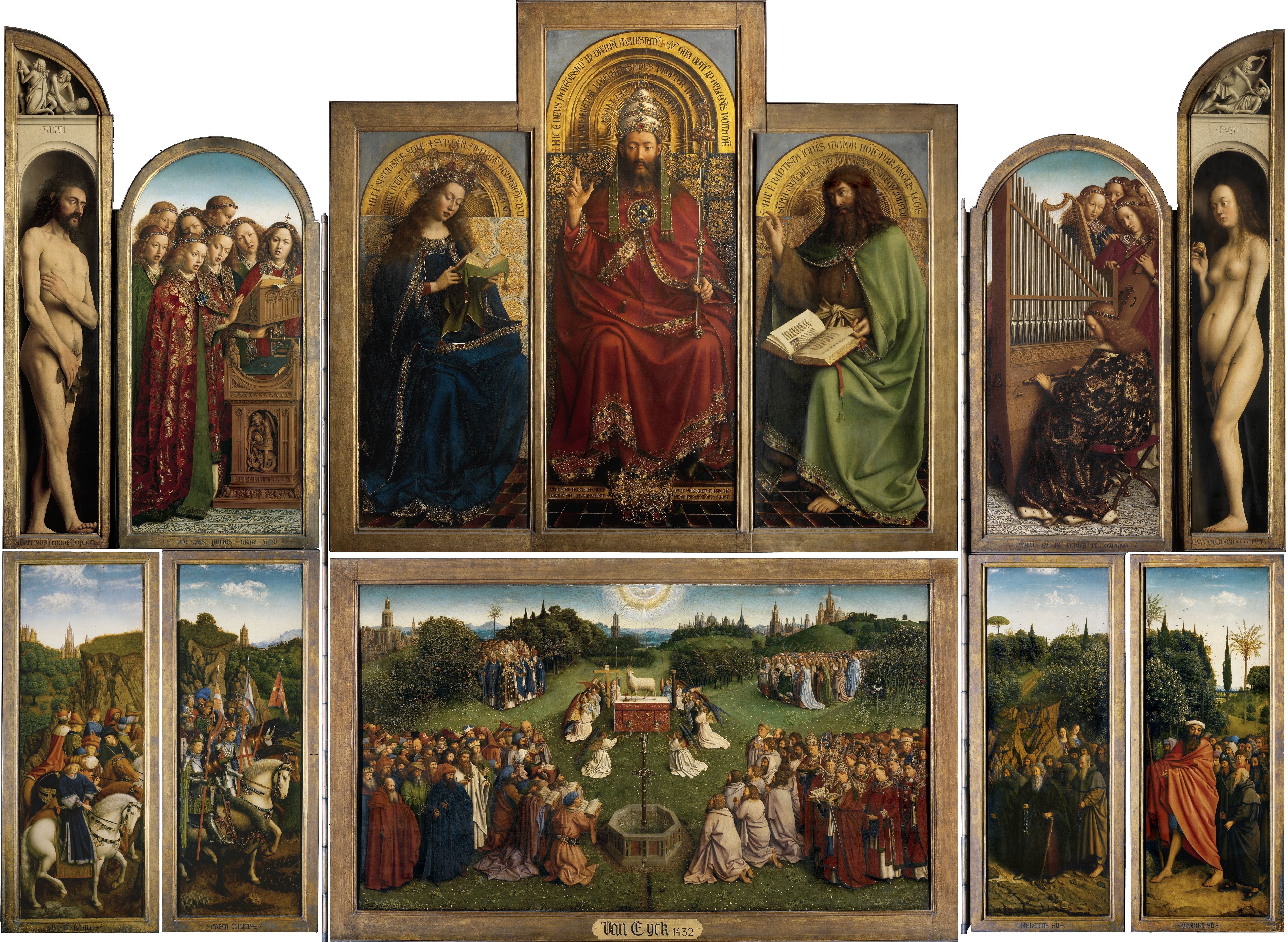
Panel painting
A panel painting is a painting made on a flat panel of wood, either a single piece or a number of pieces joined together. Until canvas became the more popular support medium in the 16th century, panel painting was the normal method, when not painting directly onto a wall (fresco) or on vellum (used for miniatures in illuminated manuscripts). Wood panels were also used for mounting vellum paintings.
The technique is known to us through Cennino Cennini's "The Craftsman's Handbook" (Il libro dell' arte) published in 1390, and other sources. It changed little over the centuries. It was a laborious and painstaking process:
Painting techniques[edit]
Once the panel construction was complete, the design was laid out, usually in charcoal.
The usual ancient painting technique was encaustic, used at Al-Fayum and in the earliest surviving Byzantine icons, which are at the Saint Catherine's Monastery. This uses heated wax as the medium for the pigments.
This was replaced before the end of first millennium by tempera, which uses an egg-yolk medium. Using small brushes dipped in a mixture of pigment and egg-yolk, the paint was applied in very small, almost transparent, brushstrokes. Thin layers of paint would be used to create volumetric forms.
By the beginning of the 15th century, oil painting was developed. This was more tolerant, and allowed the exceptional detail of Early Netherlandish art. This used a very painstaking multi-layered technique, where the painting, or a particular part of it, had to be left for a couple of days for one layer to dry before the next was applied.
Types of wood[edit]
Artists would typically use wood native to the region. Albrecht Dürer (1471–1528), for example, painted on poplar when he was in Venice and on oak when in the Netherlands and southern Germany. Leonardo da Vinci (1452–1519) used oak for his paintings in France; Hans Baldung Grien (1484/85–1545) and Hans Holbein (1497/98–1543) used oak while working in southern Germany and England. In the Middle Ages, spruce and lime were used in the Upper Rhine and often in Bavaria. Outside of the Rhineland, softwood (such as pinewood) was mainly used. Of a group of twenty Norwegian altar frontals from the Gothic period (1250–1350) fourteen were made of fir, two of oak, and four of pine (Kaland 1982). Large altars made in Denmark during the fifteenth century used oak for the figures as well as for the painted wings. Lime was popular with Albrecht Altdorfer (c. 1480–1538), Baldung Grien, Christoph Amberger (d. 1562), Dürer, and Lucas Cranach the Elder (1472–1553). Cranach often used beech wood—an unusual choice. In Northern Europe, poplar is very rarely found, but walnut and chestnut are not uncommon. In the northeast and south, coniferous trees such as spruce, and various types of fir, and pine have been used. Fir wood is shown to have been used in the Upper and Middle Rhine, Augsburg, Nuremberg, and Saxony. Pinewood was used mainly in Tirol and beech wood only in Saxony. However, in general, oak was the most common substrate used for panel making in the Low Countries, northern Germany, and the Rhineland around Cologne. In France, until the seventeenth century, most panels were made from oak, although a few made of walnut and poplar have been found.
The oak favored as a support by the painters of the northern school was, however, not always of local origin. In the seventeenth century about four thousand full-grown oak trees were needed to build a medium-sized merchant ship; thus, imported wood was necessary. Oak coming from Königsberg as well as Gdańsk is often found among works by Flemish and Dutch artists from the 15th through the 17th centuries; the origin can be established by the patterns of growth rings. In the last decade of the seventeenth century, Wilhelmus Beurs, a Dutch writer on painting techniques, considered oak to be the most useful wooden substrate on which to paint. However, exceptions are seen rather early in the seventeenth century: sometimes walnut, pearwood, cedarwood, or Indian woods were used. Mahogany was already in use by a number of painters during the first decades of the seventeenth century and was used often in the Netherlands in the nineteenth century. Even so, when canvas or copper was not used, the main oeuvre of the northern school was painted on oak panels.[8]